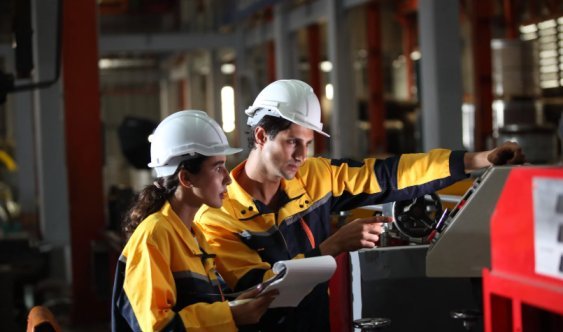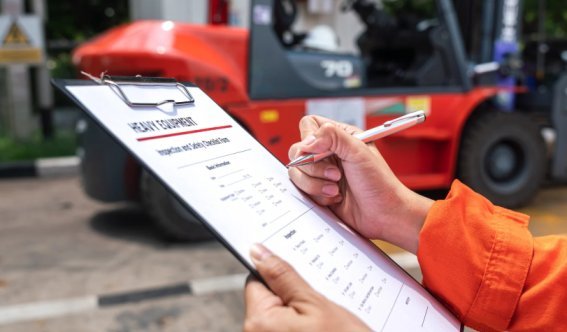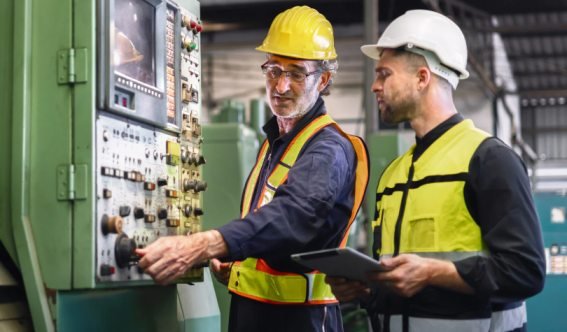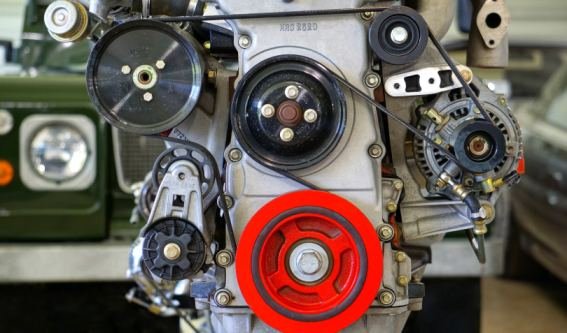
The purpose of machine guarding is to protect operators and workers from injuries caused by moving machine parts, such as crushing, cutting, and amputations. Installing proper safeguards on the IR-gird of machinery not only protects workers but also promotes efficiency and compliance with safety regulations. In this comprehensive manual, We have described in-depth, Machine Guarding Safety Tips to help you create a safe workplace. Each trick has details. Giving high knowledge And designed to like the audience from a variety of industries We come to explore the procedures to prevent danger in work and save people’s lives.
Table of Contents
The Importance of Machine Guarding
Machine guarding is a critical component of workplace safety, especially in industries that rely on heavy machinery. If guarding is not proper, workers can be exposed to hazards such as entanglement, flying debris, or contact with hazardous moving parts. According to OSHA regulations, every dangerous machine part, function, or process must be safeguarded to prevent injuries. In addition to compliance, effective machine guarding develops a culture of safety, reduces downtime and medical costs, and improves employee morale.
Key Machine Guarding Safety Tips
1. Conduct Regular Hazard Assessments

Before implementing machine guarding, assess your workplace for mechanical and non-mechanical hazards. Look at areas where machines could pose risks to workers, such as rotating parts, nip points, and sharp edges. Hazard assessments should also take into account flying debris, sparks, and harmful fluids. Regular inspections mean hazards can be addressed immediately and prevent them from becoming serious incidents.
2. Install Fixed and Secure Guards
Fixed guards are a primary safeguard against accidental contact with dangerous machine parts. Ensure all guards are securely attached and made of durable materials. These barriers should prevent any part of the operator’s body from entering the danger zone during machine operation. For optimal safety, guards should also be tamper-proof, preventing workers from bypassing them.
- Best Practices:
- Use high-quality materials such as metal or reinforced plastic.
- Keep guards on site to ensure visibility and do not obstruct machine operation.
- Perform regular maintenance to check for damage or wear.
3. Train Workers on Machine Guarding Practices

Training is a cornerstone of workplace safety. Employees operating machinery must understand the importance of machine guards and how to use them correctly. Include comprehensive training on safe machine operation, identifying hazards, and responding to emergencies. Refresher courses should be conducted periodically to reinforce safety practices and address new equipment or changes in procedures. For more information, refer to: Workplace Safety Tips
4. Use Presence-Sensing Devices
Protection of Modern machine guarding often includes technology to increase safety. Personal detection equipment such as light curtains or mats that are sensitive to pressure Will stop the equipment automatically if the staff enters the dangerous area These devices provide additional prevention by responding faster than human interventions.
5. Maintain Proper Machine Guarding for Power Transmission Components

Power transmission components such as belts, pulleys, and gears are common sources of injuries. Guards for these components should completely enclose the moving parts and prevent accidental contact. Place lubrication points outside the guarded area so that there is no need to remove safeguards during maintenance.
In industries where space constraints prevent physical barriers, consider relocating hazardous parts to inaccessible areas or using extended lubrication systems.
6. Adopt Secondary Safeguarding Methods
When primary safeguarding methods are not feasible, secondary approaches can reduce the risk. These include awareness barriers, safety signs, and administrative controls. These methods do not provide physical protection but reinforce warnings of potential hazards and safe practices.
7. Implement Lockout/Tagout Procedures

During maintenance or machine servicing, always enforce lockout/tagout (LOTO) procedures. This measure eliminates the risk of unintentional machine activation, safeguarding maintenance workers and ensuring their safety during repairs or servicing. Operators should be trained to recognize the importance of LOTO and strictly adhere to the protocols.
Ensuring Compliance with Safety Regulations
Compliance with OSHA standards, especially 29 CFR 1910 Subpart O, is essential for workplace safety. Following regulations not only ensures legal compliance but also minimizes risks. Conduct periodic audits and involve external safety consultants who identify areas in need of improvement. Document safety practices and keep an updated inventory of machine guards to be prepared for record-keeping and regulatory inspections.
FAQs on Machine Guarding Safety
What are the safety rules for machine guarding?
The focus of machine guarding safety rules is on preventing contact with dangerous parts, attaching guards securely, and not creating new hazards. Workers must be trained to operate machines safely and immediately report damaged or missing guards.
What is the 7-foot rule for machine guarding?
According to the 7-foot rule, any moving parts that are within 7 feet of the ground must be guarded to prevent accidental contact. This applies to all machinery, including overhead equipment.
What are the 5 machine guarding controls?
The five primary machine guarding controls are:
- Correction guard
- Interlocked guards.
- Adjustable guards.
- Self-adjusting guards.
- Presence-sensing devices.
Each of these controls provides a different level of protection and is used depending on the specific machine and operational needs.
What is the golden rule of machine guarding?
The golden rule of machine guarding is: “Never bypass or disable safety guards.” Guards are designed to protect workers from injury and must remain functional at all times during operation.
Conclusion
Machine guarding is not just a compliance with the requirements. It is about creating a safe and effective working environment. Implementing these Machine Guarding Safety Tips will allow you to reduce the risk. Protect employees And increase operational efficiency Regular training Appropriate maintenance And compliance with safety regulations an important components of a strong machine protection program Provide safety priorities to ensure your team’s well-being and the success of your organization.




